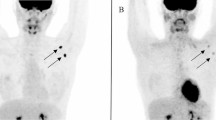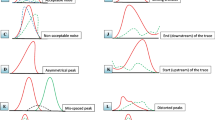Abstract
Casings represent common evidence in a forensic laboratory, due to high frequency of firearms usage during perpetration of criminal offenses. Possible DNA evidence from casings is compromised by degradation, inhibition, and initial low-quantity deposition of biological material. For that reason, in the last 15 years, scientists have been trying to optimize procedures for recovery and amplification of DNA possibly present on its surface. In this study, we share our 12-year experience done on a total of 698 casework casings, comparing two DNA recovery methods commonly used—soaking and swabbing, as well as efficacy of two commercially available DNA amplification kits (AmpFLSTR® Identifiler® and AmpFLSTR® Identifiler® Plus kits). Of all analyzed casings, 30 were excluded as 28 (4%) matched the victims’ DNA profiles and 2 (0.3%) samples were proved to be contaminated by technicians. Overall success in obtaining interpretable DNA profiles was 15.6% (104/668) (13.8% (55/399) for AmpFLSTR® Identifiler® Plus combined with soaking, 22% (33/150) for AmpFLSTR® Identifiler® Plus combined with swabbing, and 13.4% (16/119) using AmpFLSTR® Identifiler® kit and swabbing recovery method). Our data suggest the importance of both DNA recovery methods and amplification kits used, and point out swabbing of casings combined with AmpFLSTR® Identifiler® Plus kit as methods of choice. Nonetheless, our results are based on real casework and are prone to uncontrolled variables.

Similar content being viewed by others
References
Horsman-Hall K, KM OY, Karczynski SL, Davis AL, Ban JD, Greenspoon SA (2009) Development of STR profiles from firearms and fired cartridge cases. Forensic Sci Int 3:242–250. https://doi.org/10.1016/j.fsigen.2009.02.007
Gashi B, Edwards MR, Sermon PA, Courney L, Harrison D, Xu Y (2010) Measurement of 9 mm cartridge case external temperatures and its forensic application. Forensic Sci Int 200(1–3):21–27. https://doi.org/10.1016/j.forsciint.2010.03.018
Montpetit S, O’Donnell P (2009) An optimized procedure for obtaining DNA from fired and unfired ammunition. Forensic Sci Int 4:70–74. https://doi.org/10.1016/j.fsigen.2015.03.012
Wang DY, Chang CW, Lagacé RE, Calandro LM, Hennessy LK (2012) Developmental validation of the AmpFℓSTR® Identifiler® Plus PCR Amplification Kit: an established multiplex assay with improved performance. J Forensic Sci 57(2):453–465. https://doi.org/10.1111/j.1556-4029.2011.01963.x
Romanini C, RomeroFerrer M, Catelli ML, Vullo C (2011) A comparison of AmpFlSTR Identifiler™ Kit versus AmpFlSTR Identifiler Plus™ Kit in challenging bone samples by using normal and increased PCR cycle number. Forensic Sci Int Genet: ss 3(1):e514–e515. https://doi.org/10.1016/j.fsigss.2011.10.004
S. Đurđević-Lukić, Tadić M, Milić T (2015) Weapons targeted: the misuse of firearms in Serbia / - Beograd:SEESAC. Article in Serbian. (http://www.seesac.org/f/docs/SALW-Awareness-and-Communication/Oruzje-na-metiTargeting-Weapons-BCMS.pdf)
Dieltjes P, Mieremet R, Zuniga S, Kraaijenbrink T, Pijpe J, de Knijff P (2011) A sensitive method to extract DNA from biological traces present on ammunition for the purpose of genetic profiling. Int J Legal Med 125:597–602. https://doi.org/10.1007/s00414-010-0454-4
Author information
Authors and Affiliations
Corresponding author
Ethics declarations
Conflict of interest
The authors declare that they have no conflict of interest.
Ethical approval
All procedures performed in this study were in accordance with the ethical standards of the Serbian national research committee and with the 1964 Helsinki declaration and its later amendments. The study was approved by authorities of the Faculty of Biology at the University of Belgrade.
Rights and permissions
About this article
Cite this article
Radojicic, V., Keckarevic Markovic, M., Puac, F. et al. Comparison of different methods of DNA recovery and PCR amplification in STR profiling of casings—a retrospective study. Int J Legal Med 132, 1575–1580 (2018). https://doi.org/10.1007/s00414-018-1812-x
Received:
Accepted:
Published:
Issue Date:
DOI: https://doi.org/10.1007/s00414-018-1812-x




